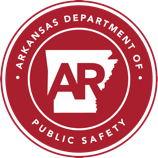Initially, CERT programs were developed to assist communities in taking care of themselves in the aftermath of a major disaster when first responders are overwhelmed or unable to respond because of communication or transportation difficulties. As the CERT concept has taken hold across the country, however, CERTs have become much more than originally envisioned. CERTs have proven themselves to be an active and vital part of their communities’ preparedness and response capability. For example, CERTs have been used to:
- Distribute and/or install smoke alarms and batteries to the elderly and disabled.
- Assist with evacuations and traffic control.
- Promote community awareness of potential hazards and preparedness measures.
- Supplement staffing at special events, such as parades.
- Act as victims in training exercises.
CERTs are an investment of local government’s time and resources. To capitalize on this investment, program sponsors can view CERT members as a volunteer resource that can assist with public safety activities. Such an approach will actively involve members in serving their communities beyond disaster response and add value to the CERT program.
The best source of help in an emergency or disaster is the paid or volunteer professional responder. But, if they are not available to addresss immediate life-saving needs or to protect property, CERT memebers can help. CERTs are not intended to replace a community’s reponse capability, but rather to serve as an important supplement to it. The agency sponsoring the CERT program is creating a volunteer resource that is part of the community’s operational capability following a disaster. That agency should develop training standards for CERT personnel and protocols for their activation and use.
CERT members must keep their safety in mind as their first priority. CERT volunteers must know their capabilities and the limitations of their training and equipment and work within those limitations.
CERTs Do Not:
- Suppress large fires.
- Enter structures that they consider heavily damage and dangerous (e.g., leaning or moved from foundation).
- Perform hazardous materials cleanup or respond to incidents involving radiological, chemical, or biological agents.
- Perform medical, fire or search and rescue operations beyond their level of training.
- Activate or deploy unless called for in their procedures.
CERTs are considered “Good Samaritans” and covered under the Volunteer Protection Act. CERT volunteers do not have any authority beyond serving as “Good Samaritan” when helping others. When deployed appropriately, however, CERTs can compliment and enhance first-response capability in neighborhoods and workplaces by ensuring the safety of themselves and their families working outward to the neighborhood or office and beyond until first responders arrive. CERTs can then assist first-response personnel as directed.
County emergency managers and others involved in the CERT program can send trainee lists, training questions and other inquiries to ADEM.
Useful Links
- For Business
- For Kids – being prepared can be fun, too! Visit Ready Kids
- Are you a CERT Volunteer? Log your Volunteer Hours here.


